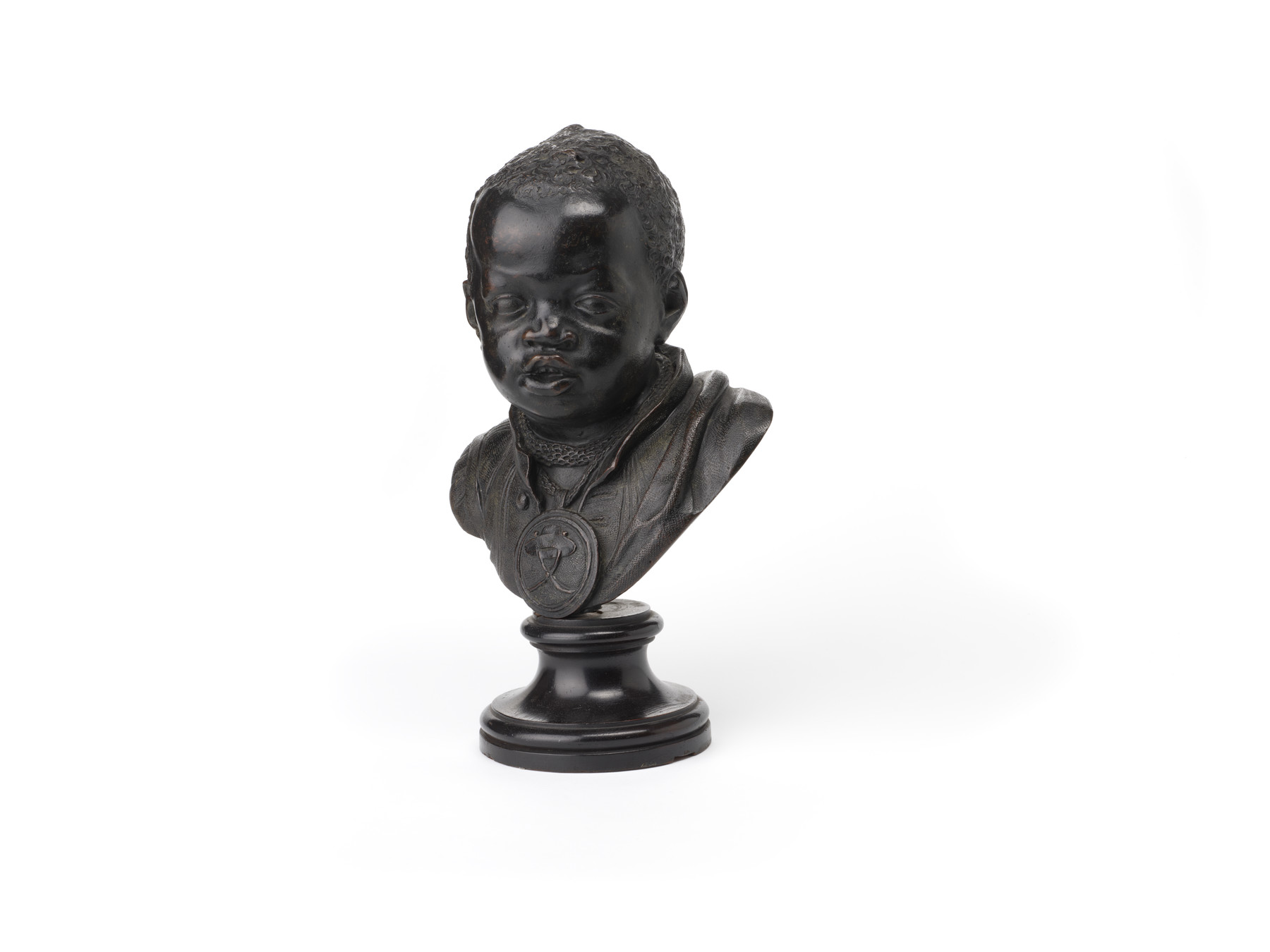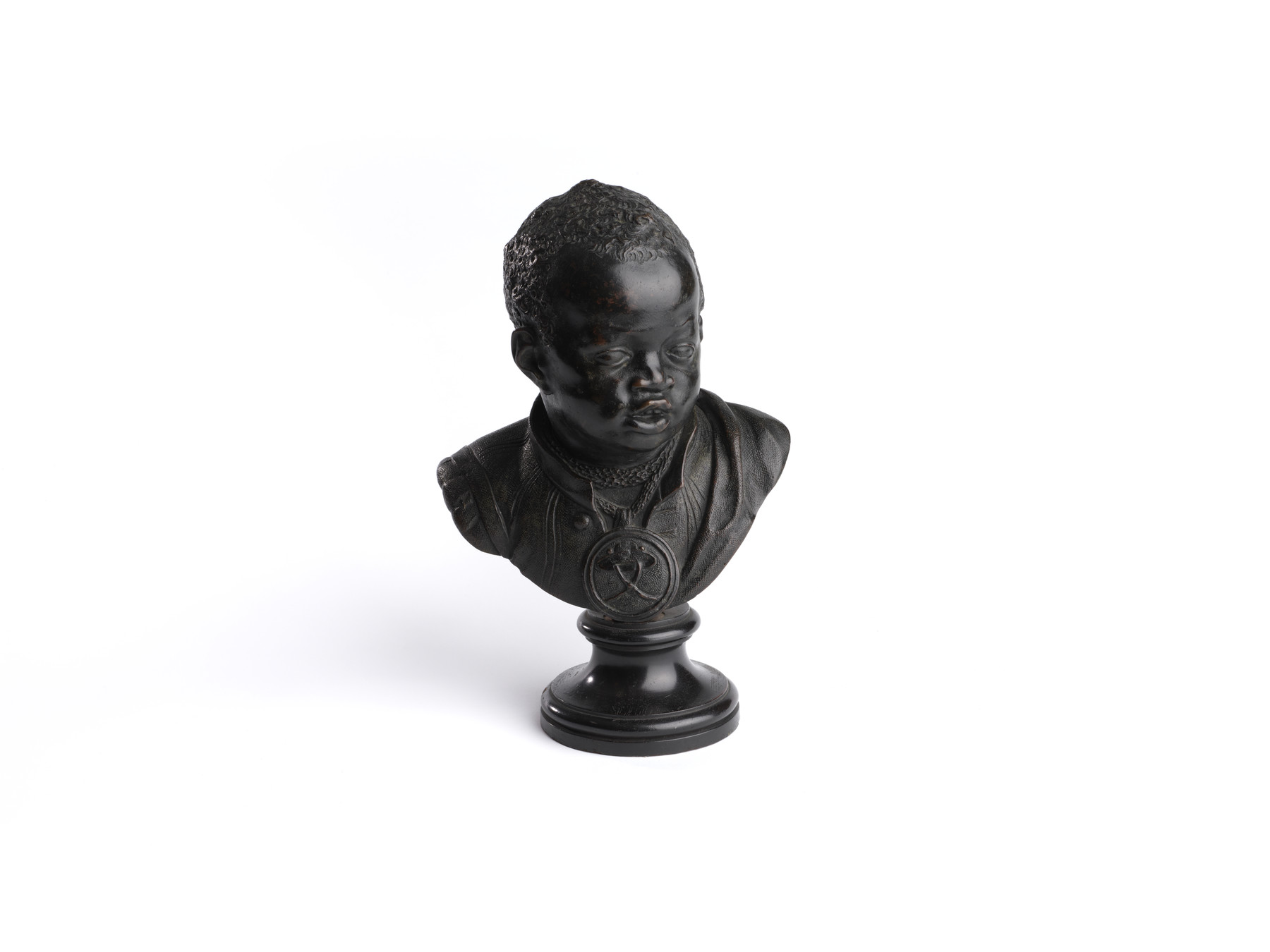Bust of an African Boy in Servant's Livery
(Baroque Europe )
This bust of a very young servant wearing the generic insignia of a cardinal is one of the most sensitive early renderings of an African boy by a European sculptor. The detail, sense of movement, and expression suggest that this is a likeness of a particular individual. He was probably enslaved, as were most servants in urban centers of Catholic Europe. The existence of other versions of this bust with different insignia, in marble as well as in bronze, suggests that although the artist probably initially portrayed a specific young boy whose identity is now lost, this work quickly became seen as a “type,” representing all boys of African descent in the service of and/or enslaved by European cardinals.
De Cock was one of the leading sculptors working in the Southern Netherlands (present-day Belgium) in the years around 1700.
Provenance
Provenance (from the French provenir, 'to come from/forth') is the chronology of the ownership, custody, or location of a historical object. Learn more about provenance at the Walters.
Marquise de Ganay, Paris [date and mode of acquisition unknown]; Marquise de Ganay Sale, Paris, May 8, 1922, no. 83; Arnold Seligman, Rey and Co., New York [date and mode of acquisition unknown]; Henry Walters, Baltimore, 1930, by purchase; Walters Art Museum, 1931, by bequest.
Exhibitions
| 2014 | The Janet & Walter Sondheim Artscape Prize 2014 Finalists. The Walters Art Museum, Baltimore. |
Conservation
| Date | Description | Narrative |
|---|---|---|
| 6/28/1971 | Treatment | cleaned |
Geographies
Belgium, Antwerp (Place of Origin)
Measurements
H: 9 15/16 in. (25.2 cm)
Credit Line
Acquired by Henry Walters, 1930
Location in Museum
Accession Number
In libraries, galleries, museums, and archives, an accession number is a unique identifier assigned to each object in the collection.
In libraries, galleries, museums, and archives, an accession number is a unique identifier assigned to each object in the collection.
54.24






